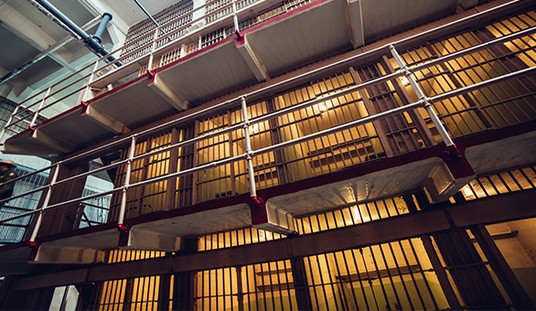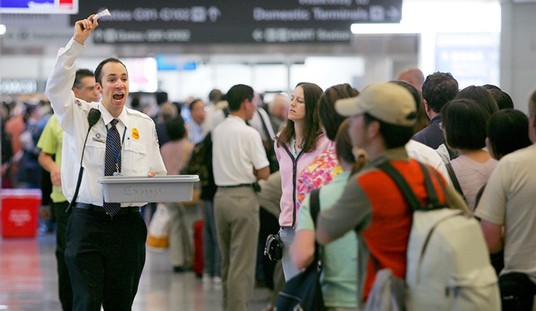On Wednesday, when President Obama’s union-controlled National Labor Relations Board issued a complaint against the Boeing Company for making a sound business decision to “dual source” its 787 production, it was another blatant example of a government agency run amok. However, while most of the nuts and bolts behind the dispute were detailed here, there are several other, more intricate details behind the NLRB’s legally tenuous prosecution of Boeing that are deserving of closer examination—most notably, the union’s own culpability behind the decision.
A Union With a Bone to Pick.
Even before the decision was made by Boeing to locate the second assembly line in South Carolina, Boeing’s union (the International Association of Machinists) had a problem in South Carolina. Namely, workers at the facility had voted the Machinists’ union out shortly after Boeing bought the facility in 2009 from Vought Aircraft because of workers believed the union poorly represented them.
What brought the workers to the point of decertifying the union an interesting story that is both part irony and part poor representation by the union.
In 2007, after having been narrowly voted in to represent the employees of Vought Aircraft in North Charleston, SC, the Machinists’ union (IAM) was still in the midst of negotiating its first contract when the union struck Boeing for two months in Puget Sound in 2008. Since Vought was one of Boeing’s suppliers, the union’s Washington strike forced Vought to temporarily close the South Carolina plant and lay off the employees.
After nearly a year of negotiations, as the one year anniversary approached, there were reportedly rumors that there was a decertification effort under way. However, either sensing that it may be decertified or realizing its potential membership base was going to be significantly cut back, the union engineered a contract to lock employees in even before the company had presented its final offer:
Some employees have expressed concern that they didn’t know a vote was being taken and that only a small fraction of those in the collective bargaining unit might have participated. Those concerns came up at a meeting last night at the union hall, according to a worker who was there.
Dallas-based Vought was also taken by surprise that its workers voted to ratify an agreement with the Machinists union, the company said in a statement released Thursday.
Vought spokeswoman Lynne Warne said Vought was not privy to information about the number of workers who participated in the vote.
“Despite the fact that additional bargaining sessions were scheduled and final proposals had not been exchanged, Vought officials were advised by the IAM (Machinists union) that union members had ratified Vought’s proposals at an emergency meeting called by the union on Nov. 7,” the company said.
Touting that an “overwhelming” 92% of the members voted to accept the contract, it soon became apparent that the 92% the union claimed was really12 out of 13 people who actually showed up at the union’s meeting and voted (out of nearly 200 affected). What was worse than the back-door deal the Machinists rammed through was the fact that it was also a bad deal, according to employees:
“We got screwed,” said newly laid-off assembly mechanic Jay Fleckenstein on Thursday night as he worked his second job delivering pizza.
[snip]
And mechanic Pam DeGarmo said the 1.5 percent annual wage hike won’t even cover the union dues and inflation.
“It’s a horrible contract,” said DeGarmo. “I didn’t gain anything. It’s going to cost me money.“
Several months later, in July 2009, Boeing announced it was buying the South Carolina facility from Vought. By the end of July, with the facility purchased, the employees in South Carolina filed to decertify the union.
Meanwhile, in Puget Sound, Boeing had already begun seeking to obtain a longer contract with the Machinists union. In early July, Boeing told Washington State politicians that it was seeking a longer contract with the union
Members of the state’s congressional delegation said Tuesday that Boeing is laying down an ultimatum to its biggest union: Unless a long-term agreement barring strikes by the Machinists is reached by this fall, Boeing will build a second production line for the 787 someplace outside Washington.
“The whole thing comes down to, can they get a long-term agreement with the union, with a no-strike clause,” influential U.S. Rep. Norm Dicks, D-Bremerton, said in an interview Tuesday. “That’s what ultimately has to happen here in the next two or three or four months — or they are going to go elsewhere.
“I think if they get this agreement, they would stay.”
In a separate interview, Gov. Chris Gregoire said Boeing Commercial Airplanes CEO Scott Carson told her recently the company is seeking a long-term no-strike agreement with the Machinists union.
Carson also said Boeing will likely make its decision on the location of a second 787 production line this fall, though Gregoire said he did not specifically link the two elements as an ultimatum.
In late October 2009, Boeing, unable to get an agreement with the union, announced that it would locate its second assembly line in South Carolina.
“We’re taking prudent steps to protect the interests of our customers as we introduce the 787-9 and ramp up overall production to 10 twin-aisle 787 jets per month,” said Albaugh.
“While we welcome the development of this expanded capability at Boeing Charleston, the Puget Sound region is the headquarters of Boeing Commercial Airplanes. Everett will continue to design and produce airplanes, including the 787, and there is tremendous opportunity for our current and future products here,” Albaugh emphasized. “We remain committed to Puget Sound.”
In March, 2010, the Machinists filed charges against Boeing claiming the company’s move was in retaliation for the 2008 strike. At the time, the Seattle Times noted:
The IAM struck Boeing for two months in fall 2008, the fourth strike in a decade. Early the following year, Boeing Chief Executive Jim McNerney told Washington’s congressional delegation the repeated strikes were a major problem and the company would seek another location for its second 787 assembly line unless the union agreed to a long-term no-strike clause.
“We were entirely transparent with the IAM,” [Boeing spokeman Tim] Healy said. “We needed an agreement that would allow us to meet our customer commitments.”
The complaint was filed with the NLRB in March. That same month, Jim Albaugh, the chief executive of Boeing Commercial Airplanes, said in a Seattle Times interview that “the overriding factor (in choosing South Carolina) was not the business climate. And it was not the wages we are paying today … It was that we can’t afford to have a work stoppage every three years.”
Is that an illegal reprisal, punishing a past strike? Or is it a legitimate strategic choice, avoiding future strikes?
“Our decision has everything to do with being a reliable supplier and is not a reprisal for the past,” said Boeing’s Healy.
The NLRB, in the complaint published on Wednesday, believes that, rather than Boeing making a legitimate strategic choice (as many other companies have) Boeing’s actions were “in retaliation for past strike activity and to chill future strike activity by its union employees.”
Unfortunately for the IAM, if it were not for its poor representation in South Carolina, where the union had existed before getting kicked out, it could have had Boeing members in both Washington as well as South Carolina and the NLRB fight would never have had to take place.
_________________
“I bring reason to your ears, and, in language as plain as ABC, hold up truth to your eyes.” Thomas Paine, December 23, 1776














Join the conversation as a VIP Member